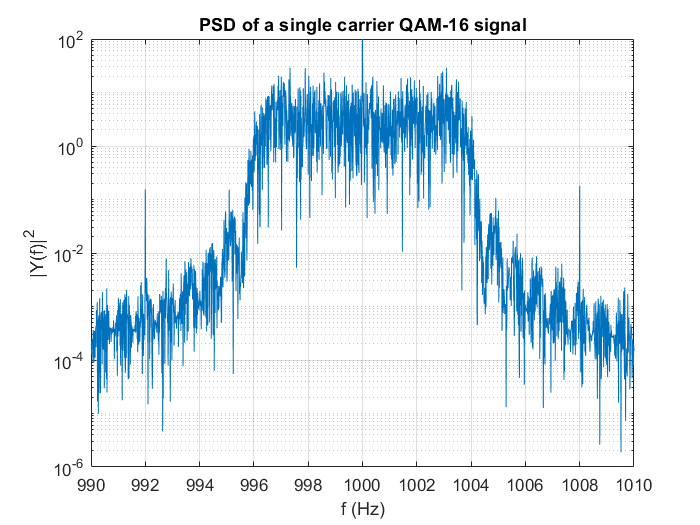It is well established that OFDM does not use pulse shaping as it destroys the orthogonality of the subcarriers, however, suppose we instead use a form of multi-carrier modulation with non orthogonal subcarriers then should pulse shaping be employed since orthogonality is not a worry? I did some investigating and this is my results
First, we consider a single carrier (SC) QAM-16 system modulated onto a 1khz carrier, which uses pulse shaping and has a bandwidth of ~10Hz as shown below
If we then transform this to a multi-carrier system my basic idea would be to have, say, 4 subcarriers transmitting in parallel, each with a symbol period (T_s) 4 times of the SC system. If in my code I do not use pulse shaping, and simply transmit the sampled QAM-16 symbol for 4T_s. Since the original BW is 10Hz, I chose a 10Hz spacing of subcarriers, This yields the following PSD:
However, the BW was only 10Hz when pulse shaping was used, and in this case pulse shaping wasnt used so its unclear what bandwidth they should be space at.
We then consider the same scenario, but instead of interpolating the sampled value by repeating it for 4 sample periods, we interpolate it for 4T_s by using a pulse shaping filter with upsampling. We can plot the PSD of such a system, with subcarrier spaced at 10Hz intervals as before.
However, what we can see is that because the symbol period is now longer for each subcarrier, the signal switched less frequently, and so the bandwidth of the pulse shaped signal is less that 10Hz, so a 10Hz subcarrier spacing no longer makes sense. So I ask:
Should pulse shaping be used with non-orthogonal multicarrier modulation, and if so, what subcarrier spacing should be used?
Thanks!



